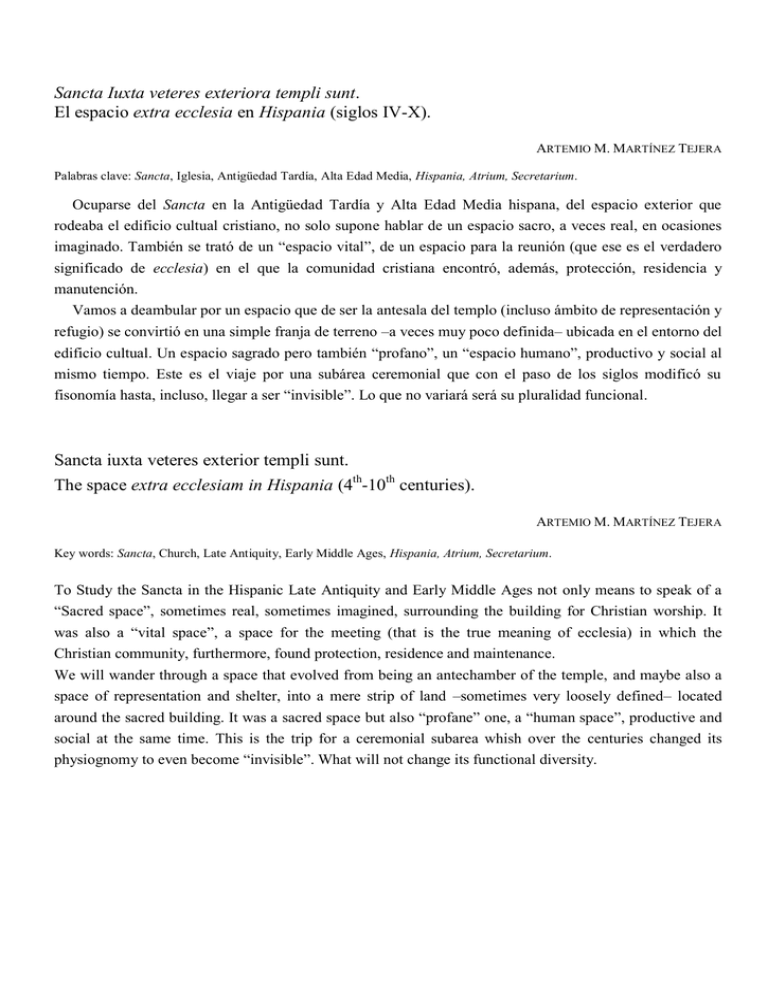Sancta Iuxta veteres exteriora templi sunt. El espacio extra ecclesia
Anuncio

Sancta Iuxta veteres exteriora templi sunt. El espacio extra ecclesia en Hispania (siglos IV-X). ARTEMIO M. MARTÍNEZ TEJERA Palabras clave: Sancta, Iglesia, Antigüedad Tardía, Alta Edad Media, Hispania, Atrium, Secretarium. Ocuparse del Sancta en la Antigüedad Tardía y Alta Edad Media hispana, del espacio exterior que rodeaba el edificio cultual cristiano, no solo supone hablar de un espacio sacro, a veces real, en ocasiones imaginado. También se trató de un “espacio vital”, de un espacio para la reunión (que ese es el verdadero significado de ecclesia) en el que la comunidad cristiana encontró, además, protección, residencia y manutención. Vamos a deambular por un espacio que de ser la antesala del templo (incluso ámbito de representación y refugio) se convirtió en una simple franja de terreno –a veces muy poco definida– ubicada en el entorno del edificio cultual. Un espacio sagrado pero también “profano”, un “espacio humano”, productivo y social al mismo tiempo. Este es el viaje por una subárea ceremonial que con el paso de los siglos modificó su fisonomía hasta, incluso, llegar a ser “invisible”. Lo que no variará será su pluralidad funcional. Sancta iuxta veteres exterior templi sunt. The space extra ecclesiam in Hispania (4th-10th centuries). ARTEMIO M. MARTÍNEZ TEJERA Key words: Sancta, Church, Late Antiquity, Early Middle Ages, Hispania, Atrium, Secretarium. To Study the Sancta in the Hispanic Late Antiquity and Early Middle Ages not only means to speak of a “Sacred space”, sometimes real, sometimes imagined, surrounding the building for Christian worship. It was also a “vital space”, a space for the meeting (that is the true meaning of ecclesia) in which the Christian community, furthermore, found protection, residence and maintenance. We will wander through a space that evolved from being an antechamber of the temple, and maybe also a space of representation and shelter, into a mere strip of land –sometimes very loosely defined– located around the sacred building. It was a sacred space but also “profane” one, a “human space”, productive and social at the same time. This is the trip for a ceremonial subarea whish over the centuries changed its physiognomy to even become “invisible”. What will not change its functional diversity.








